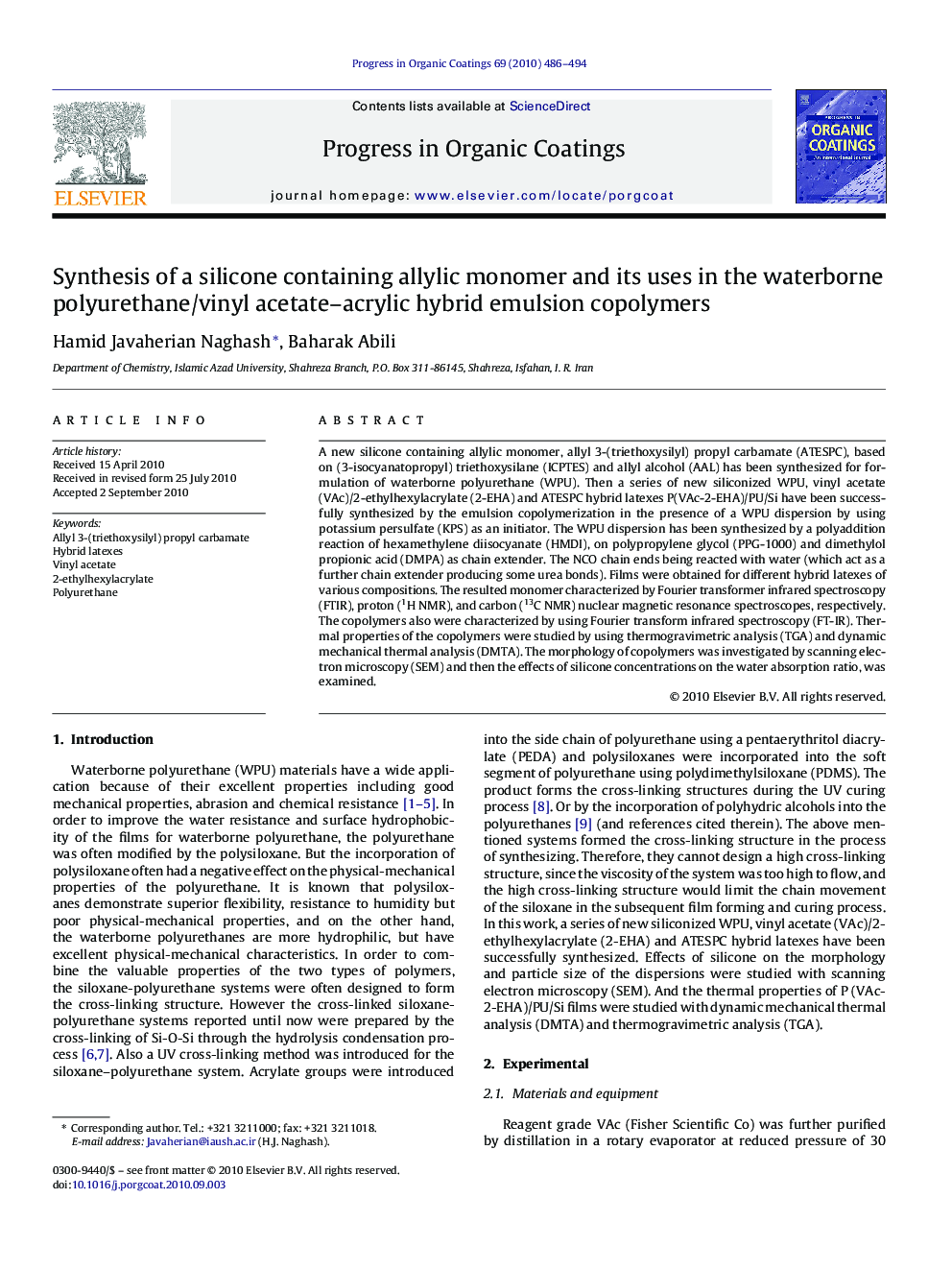| Article ID | Journal | Published Year | Pages | File Type |
|---|---|---|---|---|
| 693250 | Progress in Organic Coatings | 2010 | 9 Pages |
A new silicone containing allylic monomer, allyl 3-(triethoxysilyl) propyl carbamate (ATESPC), based on (3-isocyanatopropyl) triethoxysilane (ICPTES) and allyl alcohol (AAL) has been synthesized for formulation of waterborne polyurethane (WPU). Then a series of new siliconized WPU, vinyl acetate (VAc)/2-ethylhexylacrylate (2-EHA) and ATESPC hybrid latexes P(VAc-2-EHA)/PU/Si have been successfully synthesized by the emulsion copolymerization in the presence of a WPU dispersion by using potassium persulfate (KPS) as an initiator. The WPU dispersion has been synthesized by a polyaddition reaction of hexamethylene diisocyanate (HMDI), on polypropylene glycol (PPG-1000) and dimethylol propionic acid (DMPA) as chain extender. The NCO chain ends being reacted with water (which act as a further chain extender producing some urea bonds). Films were obtained for different hybrid latexes of various compositions. The resulted monomer characterized by Fourier transformer infrared spectroscopy (FTIR), proton (1H NMR), and carbon (13C NMR) nuclear magnetic resonance spectroscopes, respectively. The copolymers also were characterized by using Fourier transform infrared spectroscopy (FT-IR). Thermal properties of the copolymers were studied by using thermogravimetric analysis (TGA) and dynamic mechanical thermal analysis (DMTA). The morphology of copolymers was investigated by scanning electron microscopy (SEM) and then the effects of silicone concentrations on the water absorption ratio, was examined.
